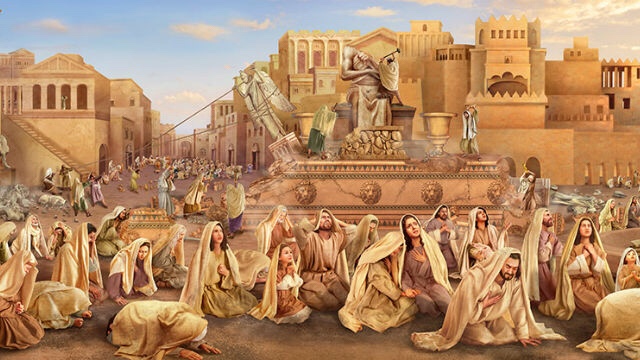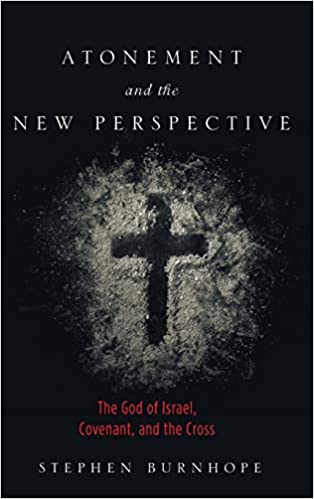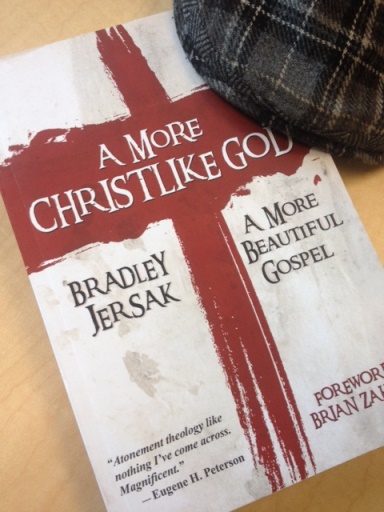Despite the Cross being central to the Way of Jesus, it is also one of the most misunderstood parts of Christianity. We all know that Jesus of Nazareth died upon the Cross, was buried, and then was resurrected three days later. But why? What was the purpose of the Cross? How does Jesus’ death fit within the story of Israel and how does that death and resurrection affect us today? These are the questions Stephen Burnhope seeks to answer in his book Atonement and the New Perspective: The God of Israel, Covenant, and the Cross.
Starting with the doctrine of the atonement, Stephen shows how the various atonement theories normally tossed around (e.g. ransom, Christus Victor, penal substitutionary, etc.) within the Evangelicalism carry within them a thread of supersessionist in which the story of Israel is effectively removed from the Cross. In response to this trend, Stephen proposes a view of the atonement in which “Israel’s story is both the context in which God’s covenantal work in Christ is situated and the means by which it can best be understood” (pg xxx).
It is this framework that makes Stephen’s book worth buying as he helps us remember the story of Israel and the importance of the Torah – which, contrary to popular option, isn’t about ‘works’ or ‘earning one’s salvation.’ Rather the Torah helped guide Israel in their response to God’s saving race. As Stephen puts it, “Just as the covenant ‘in Torah’ brings about and maintains an atoned relationship, so too does the covenant ‘in Christ’” (pg 235). The Cross isn’t about a legal transaction in which we gain a relationship with God but rather the way in which we are to live within that relationship. Our relationship with the Creator has always been there, it was just fractured and damaged due to the death, sin, and pain present within the world.
To return to Stephen’s book, “Atonement ‘in Christ’ defined in this manner does not start at the cross, any more than ‘in Torah’ it starts with a sin offering. In each case, it begins with a decision in the heart of God to enter into a covenant with humanity…The covenant provides the framework and terms according to which an at-one relationship is firstly established and secondly maintained” (pg 235). Though this may strike many within Evangelicalism as being out there, this framework and conclusion is actually more Scriptural than most atonement theories – especially penal substitutionary atonement which relies on 16th century European culture more than Scriptures.
In addition to grounding the atonement in the story of Israel, Stephen’s view of the atonement opens a fairly powerful decolonial and missiological door. “By reconceiving the relationship of the gospel to Torah in this non-competitive way, accepting each way of relating to God – ‘in Torah’ and ‘in Christ’ – as valid, but different” (pg 226) allows us to think missiological about the ways in which God worked in and through other cultures and people. Consider the story of Jonah, for a moment. You have a Israelite prophet who goes to a foreign country and preaches a message of repentance to a bunch of people who don’t know a thing about the Mosaic covenant. There are no priests, temple, altars, Levities, etc. Nothing. And yet, the Creator honors their heart and breathes his mercy and grace upon them without having them abandoned their culture (i.e. they repented in accordance with their customs and culture). “Human life,” as Stephen notes, “has always been lived under the blessing of a covenant promise of God that offered relationship with him through a covenantal nomism” (pg 243).
For those getting nervous, I must point out that accepting the legitimacy of the Torah (or the repentance of Nineveh within their culture) doesn’t lessen the work of Jesus. Isn’t about the “efficacy or permanence of one [Torah] versus the other [Jesus]” (pg 226). Rather it is about knowing the Creator directly through Jesus or indirectly through the Torah (pg 219). Though Stephen doesn’t go there, I would say that just like God showed himself indirectly through the Torah to the Israelites, we can look for echoes of the Creator within the culture, stories, and customs of people groups around the globe. In finding these echoes, we can use them to introduce people to Jesus of Nazareth, “the image of the invisible God, the firstborn over all creation” (Colossians 1:15, NET). Powerful ramifications to say the least!!!



 I read it twice. Within three months.
I read it twice. Within three months. Connected with the sovereignty of God and human participation topic are the issues of the atonement (i.e. what happened on the cross?) and the wrath of God. While anyone of these topics could have been a book within itself, Brad seamlessly weaves all three issues into his book while keeping the focus on Jesus and the cruciform God. I especially liked his selection on the atonement as breaks down the weakness with the penal substitutionary atonement view of most Protestants while highlighting the value of the victory of God over satan, evil, sin and death. But then again I’ve been a proponent of the Christus Victor atonement view for quite some time. 🙂
Connected with the sovereignty of God and human participation topic are the issues of the atonement (i.e. what happened on the cross?) and the wrath of God. While anyone of these topics could have been a book within itself, Brad seamlessly weaves all three issues into his book while keeping the focus on Jesus and the cruciform God. I especially liked his selection on the atonement as breaks down the weakness with the penal substitutionary atonement view of most Protestants while highlighting the value of the victory of God over satan, evil, sin and death. But then again I’ve been a proponent of the Christus Victor atonement view for quite some time. 🙂